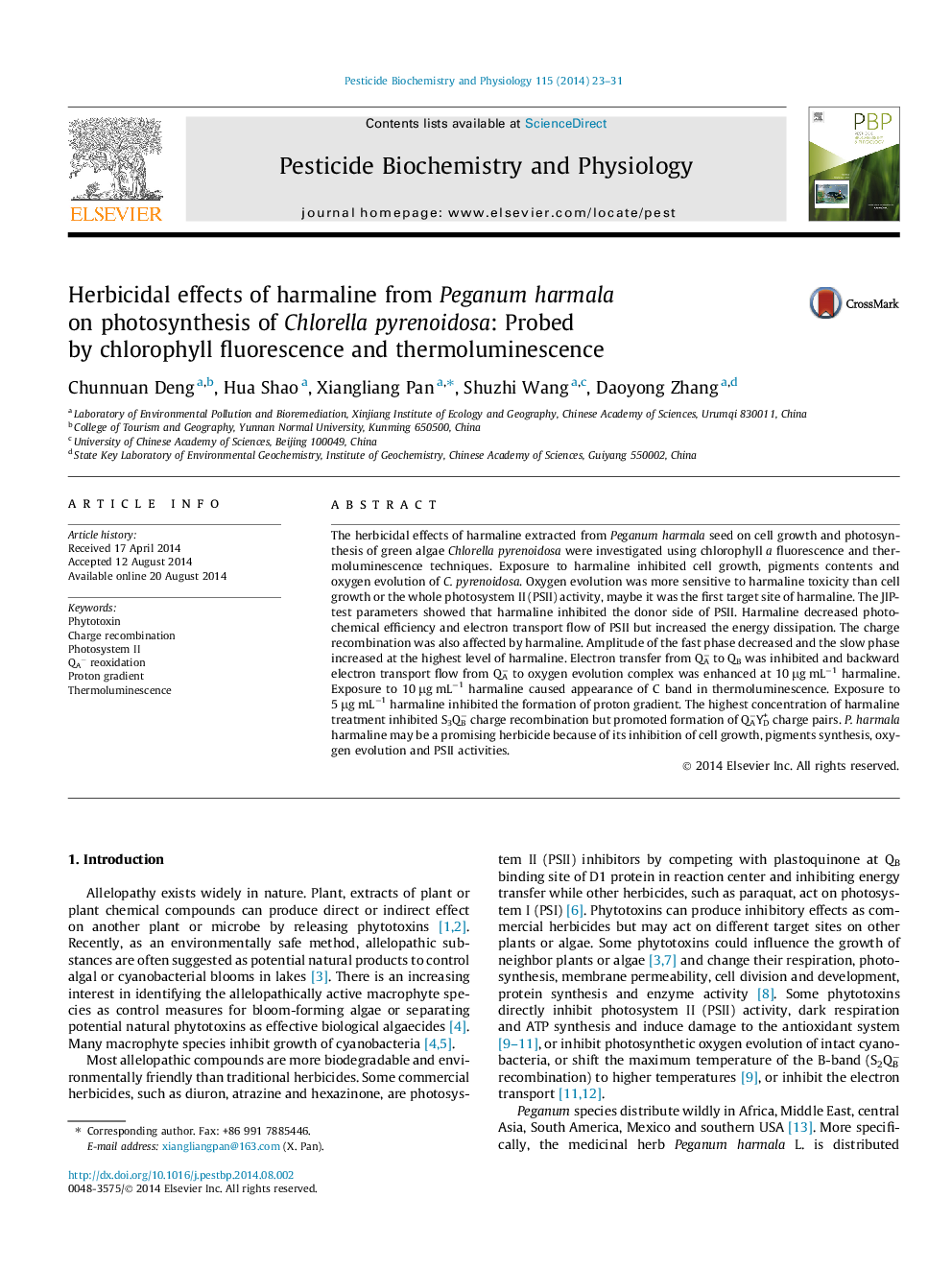| کد مقاله | کد نشریه | سال انتشار | مقاله انگلیسی | نسخه تمام متن |
|---|---|---|---|---|
| 2009130 | 1541784 | 2014 | 9 صفحه PDF | دانلود رایگان |
• P. harmala harmaline is a potential herbicide by its inhibition of PSII activity.
• Harmaline inhibits multiple sites in electron transfer chain in PSII.
• Harmaline significantly altered charge recombination in PSII.
The herbicidal effects of harmaline extracted from Peganum harmala seed on cell growth and photosynthesis of green algae Chlorella pyrenoidosa were investigated using chlorophyll a fluorescence and thermoluminescence techniques. Exposure to harmaline inhibited cell growth, pigments contents and oxygen evolution of C. pyrenoidosa. Oxygen evolution was more sensitive to harmaline toxicity than cell growth or the whole photosystem II (PSII) activity, maybe it was the first target site of harmaline. The JIP-test parameters showed that harmaline inhibited the donor side of PSII. Harmaline decreased photochemical efficiency and electron transport flow of PSII but increased the energy dissipation. The charge recombination was also affected by harmaline. Amplitude of the fast phase decreased and the slow phase increased at the highest level of harmaline. Electron transfer from QA− to QB was inhibited and backward electron transport flow from QA− to oxygen evolution complex was enhanced at 10 μg mL−1 harmaline. Exposure to 10 μg mL−1 harmaline caused appearance of C band in thermoluminescence. Exposure to 5 μg mL−1 harmaline inhibited the formation of proton gradient. The highest concentration of harmaline treatment inhibited S3QB− charge recombination but promoted formation of QA−YD+ charge pairs. P. harmala harmaline may be a promising herbicide because of its inhibition of cell growth, pigments synthesis, oxygen evolution and PSII activities.
Figure optionsDownload as PowerPoint slide
Journal: Pesticide Biochemistry and Physiology - Volume 115, October 2014, Pages 23–31
